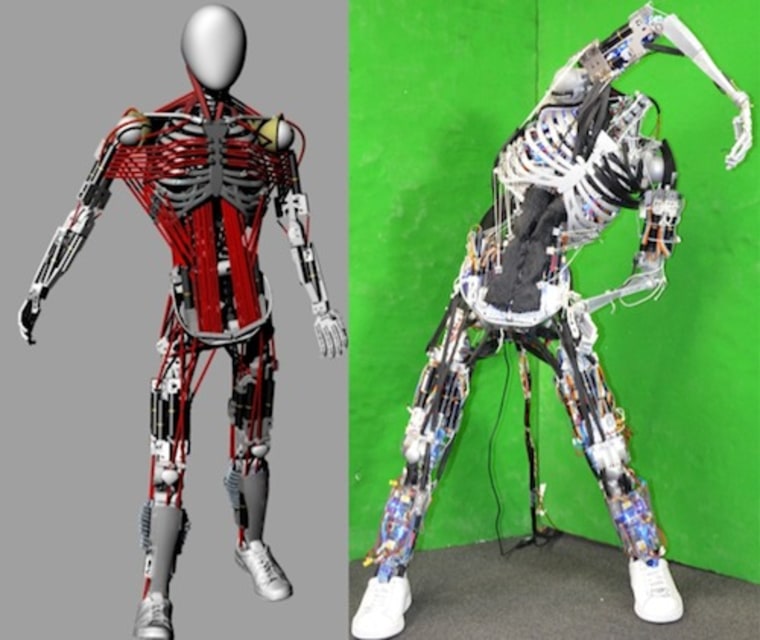Robots that look like people are nothing new, but not all of them truly aim to imitate the human body. The Kenshiro robot, an ongoing project at the University of Tokyo, aims to simulate a person right down the muscles and bones.
Kenshiro is the latest in a series that started with Kenta, a robot made to imitate, in simplified form, most of the human body's musculature. A quasi-futuristic shell and staring eyes gave it a slightly nightmarish appearance, but the robot itself was groundbreaking. With about 100 cables and motors, it simulated dozens of muscle structures.
Now, the upgraded and renamed version has 160 pulley-like robo-muscles — more than any other humanoid robot in the world. There are 76 in the torso, 22 in the neck, 25 in each leg, and 12 in each shoulder. The many muscles and tendons governing the face, hands, and feet are left out or grossly simplified, being at present too complex to include.
The result is a headless skeleton that may or may not be more terrifying than its predecessor. But seeing it in motion is what really drops you into the uncanny valley:
While some movements are still halting and lack the fluidity of smaller, more purpose-built systems like artificial hands or legs, the human quality of Kenshiro's motion is difficult to deny.
The muscles, bone structure and spine are meant to work and flex the way ours do, not just accomplish similar tasks. The idea is to eventually build a robot that not only looks like a human or can work in the same space as humans, but one that actually moves and acts using the same principles and mechanisms.
That means striking a balance between weight, power and speed. Our own bodies are marvels of efficiency and elegance (notwithstanding a few bum evolutionary hand-me-downs), so matching it will be no easy task. Kenshiro is made to have about the size and weight of a 120-pound human male, but the motors and materials necessary to produce a similar range of movement and power would make the robot too heavy.
The leader of the project, Yuto Nakanishi, is (among other things) currently working on his team's entry to the DARPA Robotics Challenge, in which several leading robot makers are working to create a humanoid rescue robot. Chances are that the next time Kenshiro gets a big update, it'll have more than a little competition.
— via IEEE Spectrum
Devin Coldewey is a contributing writer for NBC News Digital. His personal website is coldewey.cc.
